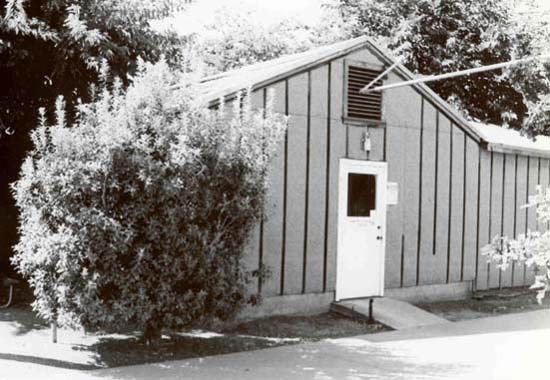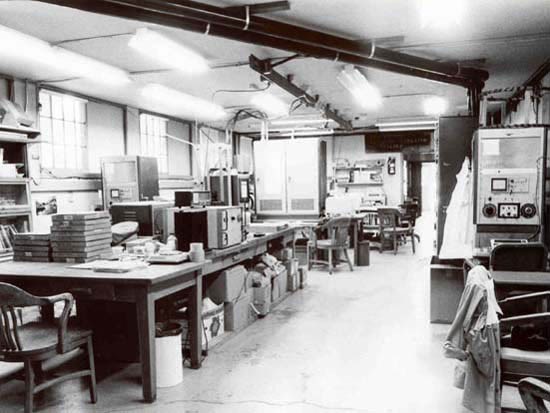
NPS Photo / Louis S. Wall, National Historic Landmarks Program
Rock Magnetics Laboratory
Menlo Park, CA
Designated an NHL: October 12, 1994
Designation withdrawn: March 8, 1999
The Rock Magnetics Laboratory, located at the United States Geological Survey in Menlo Park, was the site of research by Richard Doell, Allan Cox, and Brent Dalrymple. Their research established and dated reversals in the Earth's magnetic field, and helped to confirm the theory of plate tectonics, the major revolution in earth science in the twentieth century.
The Rock Magnetics Laboratory was a one-story, barracks style temporary building, originally part of a World War II military hospital. The walls were covered by rolled asphalt material, and the building was set on a concrete slab. It became known as the "tarpaper shack;" its lack of metal supports made it ideally suited for the needs of the lab.
At this lab Doell, Cox and Dalrymple demonstrated, contrary to the prevailing scientific opinion of the time, that the earth's magnetic field had reversed its direction at intervals on the order of tens of thousands to a few million years. As a result, they developed the geomagnetic reversal time scale for the last 5 million years. The time scale developed here, between 1957 and 1966, was the key to the interpretation of striped magnetic anomalies on the deep ocean floor that were being discovered and mapped at the same time by marine geophysicists. This interpretation of the striped magnetic patterns and the use of the geomagnetic polarity time scale led to the rapid acceptance of sea floor spreading and the development of plate tectonics. For their paleomagnetic research, Cox and Doell were awarded geology's highest honor, the Vetlesen Prize, in 1971.

NPS Photo / Louis S. Wall, National Historic Landmarks Program photograph by
The building, retaining its original research equipment, was designated a National Historic Landmark on October 12, 1994. Originally constructed as a temporary building, however, it was in extremely poor condition and was finally demolished in 1997. Prior to demolition, Historic American Engineering Record documentation was collected and the historic instrumentation was relocated to a new laboratory building, now called the Paleomagnetics Laboratory.
The Landmark designation of the Rock Magnetics Laboratory was withdrawn on March 8, 1999, and the property was removed from the National Register of Historic Places.
Last updated: August 29, 2018
